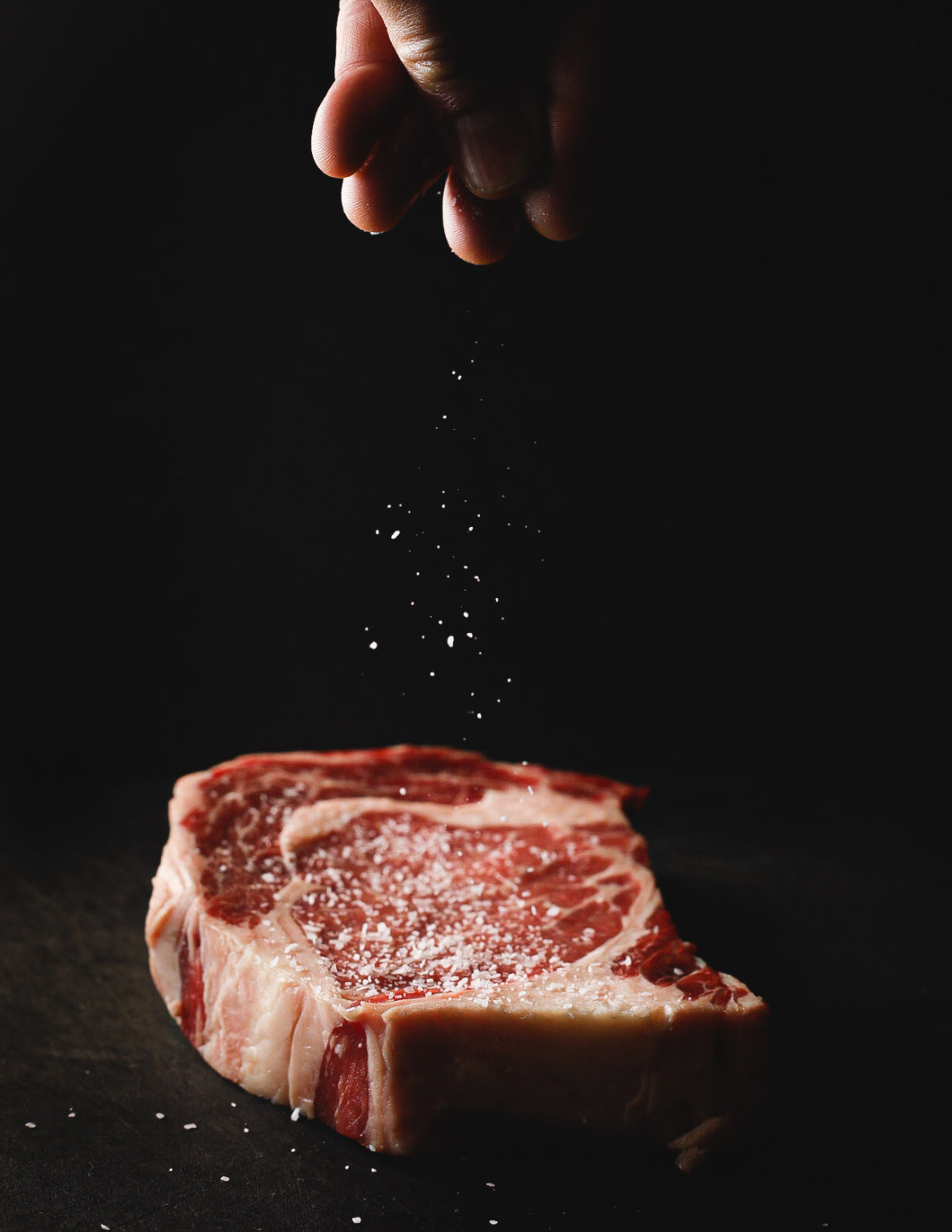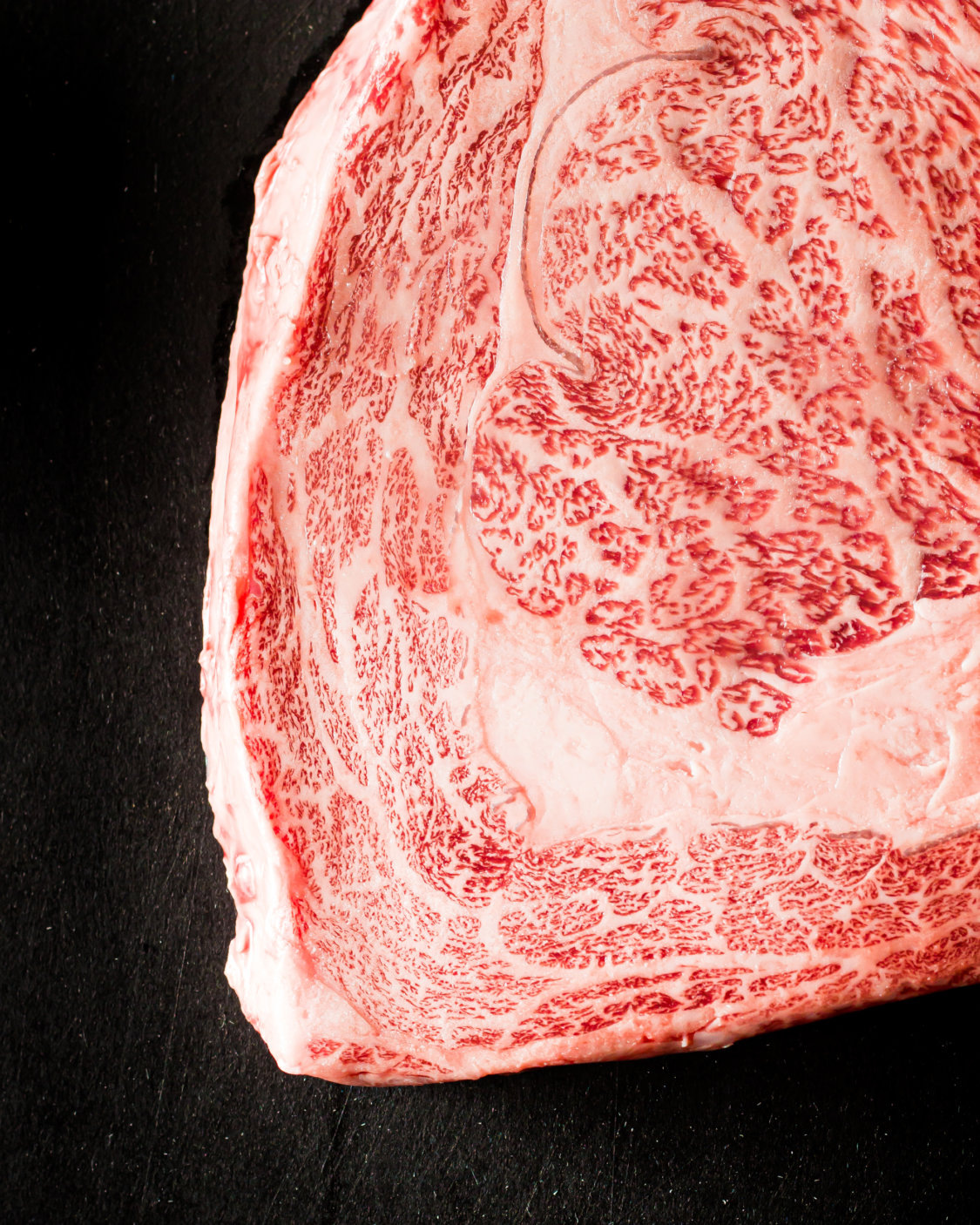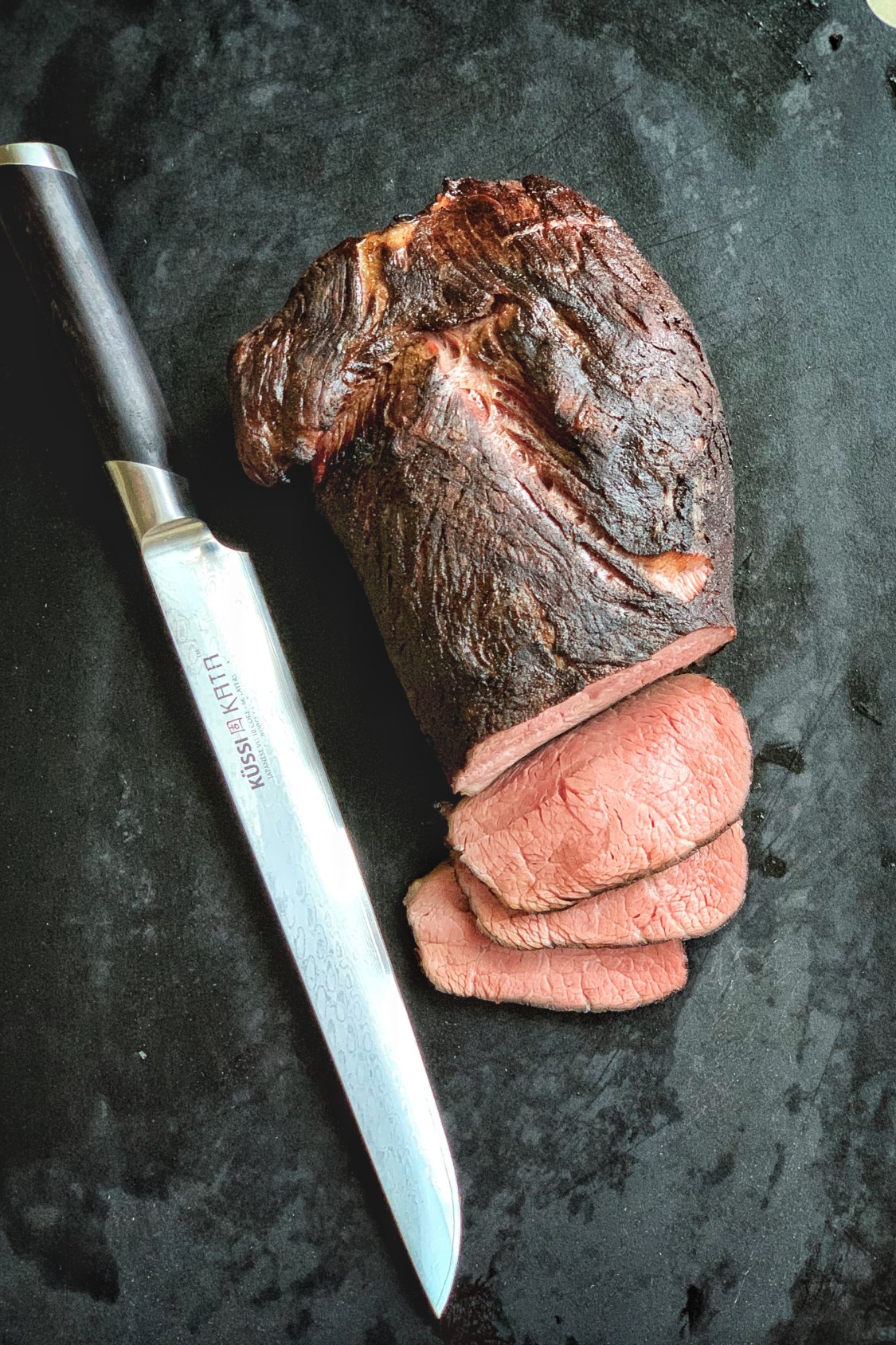The correct title for this post should have been “Salting Meats for Traditional Cooking Methods Especially if a Golden Crust is Part of the Plan” but who’s gonna google that and land here? I literally just spent 30 minutes trying to title this article and that’s because something as simple as adding salt to food isn’t all that simple when we look in closer (I have a photo-journey down below to go over this later). Ok.. sprinkling some salt on a steak is pretty simple but understanding what happens right after… that’s where the money is at. Oh… and by the way… if you want a similar article featuring eggs, today is your lucky day. Simply click here.

What type of salt should I use?
Let’s start here. There’s only one kind of salt relevant to this article. Sodium Chloride. Table salt, Maldon, Pink Salt, Black Salt, etc, they all contain sodium chloride at heart. They will all season your food in about the same way and please abandon that prejudice against table salt. I’m tired of reading negative press about our humble little guy. If that’s what you have, go for it. I mainly use Diamon Crystal Kosher salt because the ad campaigns are catchy, the crystals bigger and fermentation loves the absence of iodine.
So why so many types if they all do the same?
Some are pure Sodium Chloride, some contain additives, anti-caking agents, some have been smoked, some have been mixed with other elements like activated charcoal. The size and thickness of the crystals also play an important role here. Some salts with larger crystals are used as finishing salts, like for example Maldon or Fleur de Sel. Anyways, there are books written about this subject and I’m no expert. The important takeaway here is: Sodium Chloride is the predominant component and everything else is secondary, especially when talking about seasoning foods. The price tag on some of these salts is quite hefty you won’t see me seasoning my chicken with Fleur de Sel any time soon. Maybe just a few flakes after I’m done cooking and ready to serve.
So how do I season meat before searing?
I think it’s all accomplished in 3 easy steps.
- Add salt. Add any other stuff you like too. I like to add pepper after searing. Burnt pepper. No bueno but that’s me.
- Let the salt do its thing for some time. (I usually let the salt do its thing overnight in the fridge or at least 20 mins if in a hurry).
- Remove the excess moisture from the surface of the meat before searing using paper towels (the fridge does that for me by the way, more echo-friendly?).
Salting. A Photo-Journey.
The photo journey! Here we go. The beginning of our salty journey. Like in any preparation that involves raw meat about to get seared, by using paper towels we remove as much moisture as possible from the surface… and if you haven’t gotten into this practice yet, no better time than yesterday. Your golden-crust creating abilities will get a huge bump. Anyway, this is meat, raw, beautiful, unseasoned. Like God intended it but is lacking our favorite flavor amplifier. Salt.

Look at those beautiful kosher salt crystals (Diamon Crystal Salt baby!). Way cooler than those ugly iodine-loaded table salt ones, right? (jk). They have just been sprinkled over my $1 dollar test steak (not the same steak as the one on the cover photo!) and I’m sure you’re thinking this is not all that exciting and you’re right or… are you? The only way to find out is to keep going because shit is about to get real.

If you pay close attention now, you can start to see how the surface of the meat is becoming wetter and the salt crystals hard edges are starting to soften up. It hasn’t even been 5 minutes. I love that about salt. It’s like a super-efficient water magnet. Literally.

A few more minutes into this and now the changes are extremely obvious. Let me remind you, my lighting (the lights I use to shoot these photos I mean) is absolutely consistent between pics so the differences are caused by the salt (and also oxidation but mainly salt). There’s a fair amount of moisture visible now. The salt crystals are slowly diffusing into the water and the color of the meat’s surface is changing due to the salt’s ability to denature proteins. Salt is literally curing the meat in front of our eyes. 
The salt crystals are almost gone by now and it’s been maybe 20 minutes. The color of the meat is a little deeper but the change isn’t as dramatic. The surface of the meat is almost soupy there’s so much liquid now. By now the salt has diffused into the meat by maybe a millimeter. This is what we want if we’re in a rush but ideally, we want the salt to get diffused into the meat edge to edge evenly but that requires time and depends on the thickness of the cut. I don’t bother calculating. I go for overnight-fridge-pernoctation. 
The following photo shows what happens after one and a half hours (roughly). The color shift is very dramatic but that’s not the best part. The once wet surface of the meat has now started to look almost sticky. The moisture is getting re-absorbed by the meat and this is where we wanna be in an ideal world (using those paper towels at this point would be perfectly fine). Pretty cool, right?

Final Thoughts.
- I’m still not sure about the title of this article.
- Salting meat, veggies and pretty much anything containing water will draw moisture out.
- I hope table salt does better out there after this article.
- Drying your meat before hitting that searing pan is key. (that came off in all sorts of wrong).
- Salt not only seasons, but it also denatures proteins which means salt is a texture modifier too.
- Even after your done cooking, salt will continue to transform your food and diffuse into it.
- Look after your blood pressure.
Alright, guys, I’m out. I hope this post was helpful in some way. Comments below. Paul signing off for the day.
Wanna get more sous-vide cooking guides and cool cooking how-to’s in your mailbox? You know what needs to be done!
We never spam. You should only be getting updates when new content is posted on the site. We also respect your privacy. We don’t share your email address with anyone and you can unsubscribe anytime!





14 comments
Great article! Great information 🙂 Also, I followed the link to the egg article and loved it as well! Thanks for all your time in experimenting for the rest of us!
Christine! The reason I blog is because of wonderful comments like this! I love sharing cooking ideas with curious cooks 🙂 Thanks so much and let me know if you have any questions.
Well this was really interesting. I have used coarse Morton kosher salt for forever, but I’m going to get diamond after this. I’m sure my local deli amazon.com will have it. So, what’s funny, is that I’ve always done the same thing, without realizing how brilliant I am. As soon as I bring the filets out of the fridge, I salt them. Then before searing, I use paper towels. I also never add anything else because of the searing, like pepper. However, I’ve never thought about salting overnight. I can’t wait to do that. LOVE the photos. Wow.
thanks Mimi! I don’t think you need to switch kosher salts. Morton works just as well… maybe Diamon has slightly larger crystals but for seasoning it doesn’t really matter. Love that we’re on the same page with pepper 🙂 Salting steaks, chicken, even veggies overnight allows salt to diffuse. It’s basically a dry brine. A rub.
If you salt overnight it makes a difference with how much salt. Too much and you will cure the meat, which can be intended or not. Cured meat will taste like ham.
There’s a bit of curing taking place of course. Salt has curing effects the second you apply it to any meat and yes, overnight the effect will be more apparent which isn’t necessarily a bad thing. I’ve been doing this a while. Still… the curing will only really be obvious on the very surface… a couple of mm deep at the most?
After enough time, the salt (actually sodium and chloride ions) will penetrate all the way into the meat.
Good article. I recently saw a post warning about table salt because it contains a chemical compound called sodium chloride. Unfortunately I’m not kidding… I reacted by warning about di-hydrogen oxide, which is also a chemical compound… Hope all is well. Haven’t seen you on my blog in ages.
Stefan! Refreshing to hear from you 🙂 Glad you liked the post. Now Sodium Chloride isn’t really harmful, is it? (as a matter of fact, our bodies need it no?) I don’t know what di-hydrogen oxide is… but if you have a post about it I will read it. I will also admit, I haven’t been the most active blog reader lately but I do go to your blog frequently when I have sous vide questions/doubts. There’s modernist cuisine, and then your blog for all sous vide matters. Actually, your blog is more up to date than MC.
Di hydrogen oxide is H2O, sounds more familiar that way? I had no idea you’re still visiting my blog as I go by likes and comments. Thanks for the nice words.
After all these years and I never heard water be called that way (it makes perfect sense of course haha). You learn something new every day. I will always visit your blog. You were and still are a source of inspiration. A food passion that is hard to find.
Very interesting. Silly question but do you salt both sides or just the top. I’m on the team of salting before searing. My husband is on the team of not adding any salt, forgetting to add it before eating and then wondering why everything is so insipid lol….
hahaha! 🙂 to answer your question: Depends on the thickness of the steak. Anything over half an inch I do both sides. Anything thinner and I will only do one side. I never salt right the second before searing for the reasons mentioned in the article.
Diamond kosher salt won’t change the flavor but it’s a little easier to control by hand or in a Shaker with large holes so you can get the right amount of salt and evenly disperse it. The brand is less dense then Morton so you can visually see the salt well but you are a little less likely to over salt. One trick is to hold the salt high above the dish or meat and as they say Make It Rain. There is less salt per tablespoon by weight if you compare the brands with the scale.